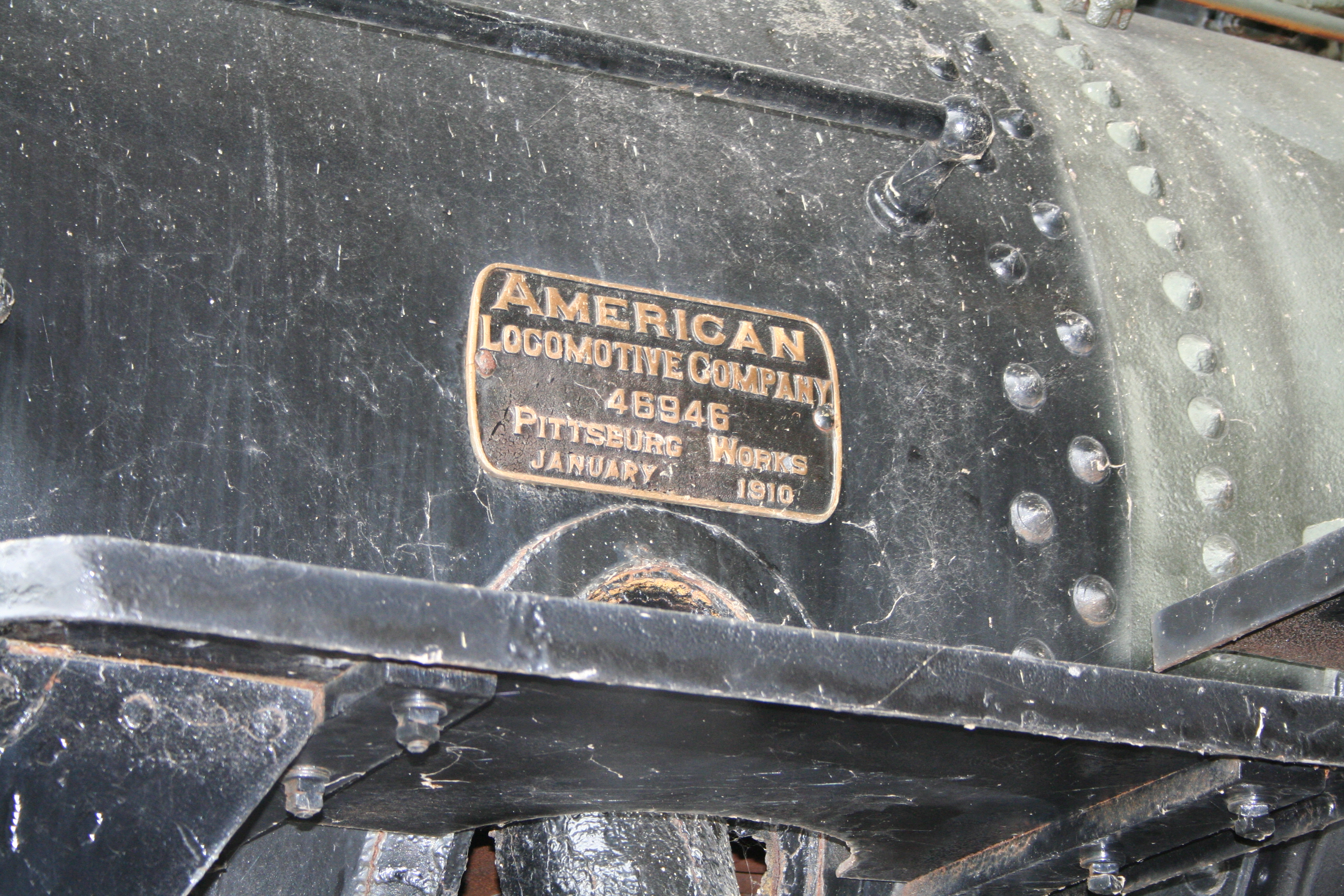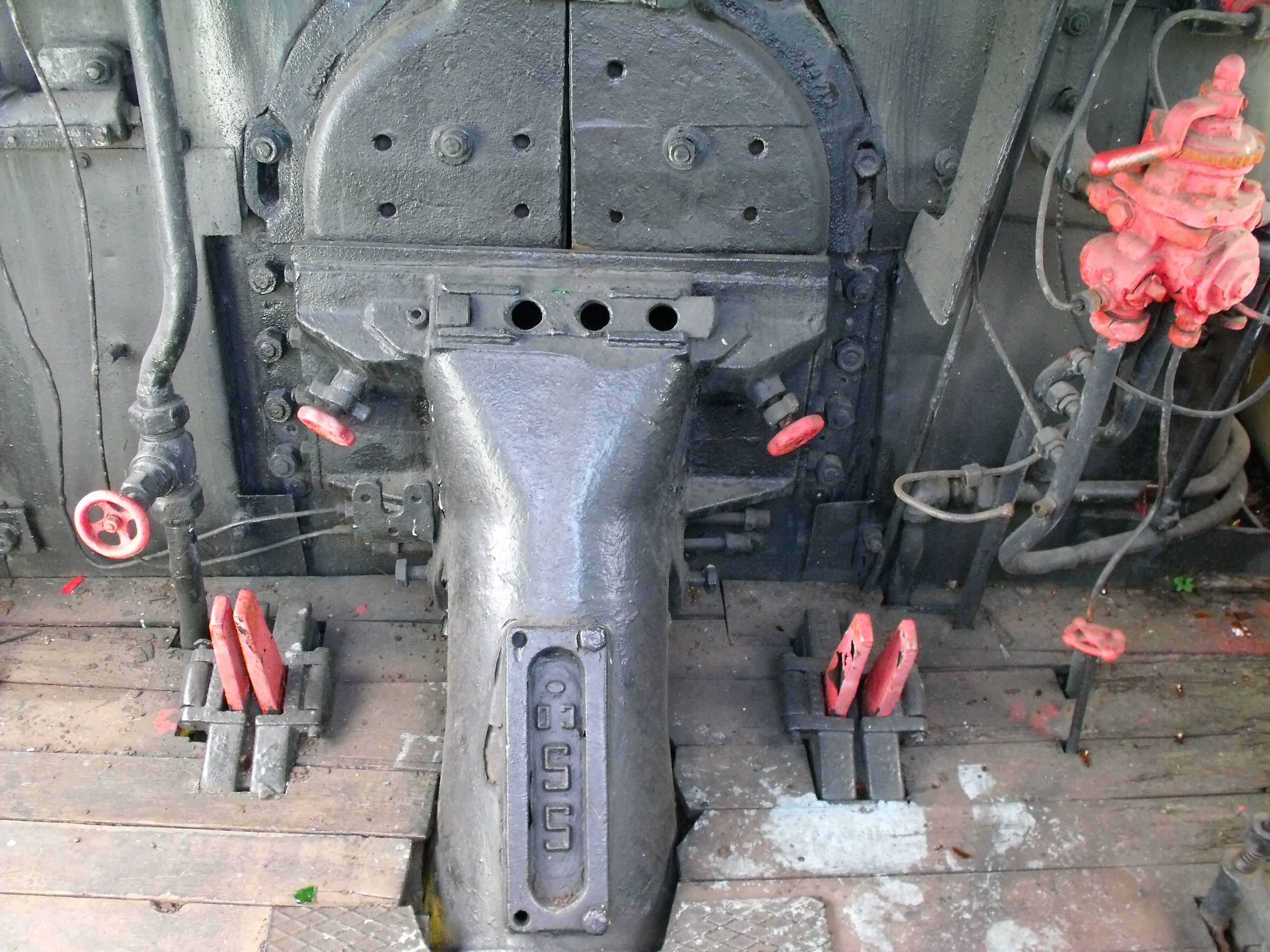|
Milwaukee Road Class L2
The Milwaukee Road class L2 were 2-8-2 or "Mikado"-type steam locomotives built by or for the Chicago, Milwaukee, St. Paul and Pacific Railroad (“The Milwaukee Road”) in the period 1912–1923. Construction history There were three sub-classes of the class L2: the L2 proper comprised 40 locomotives, built by Milwaukee Road’s Milwaukee Shops in 1912–13, 115 by Alco’s Brooks Works in 1912, and 25 by Alco’s Schenectady Works in 1914. They were followed by 100 class L2-a built by Baldwin Locomotive Works in 1920, and 100 class L2-b in 1922, also built by Baldwin. Numbering L2 When originally built, the Milwaukee Shops locomotives had been allocated 1800–1839, however only the first seven carried these numbered before the allocation became 8000–8039. Similarly, only the first 50 Brooks locomotives received their 1840–1889 numbers, before their allocation was changed to 8040–8154. The Schenectady engines were numbered 8155–8179. Sixty-nine L2 locomotives receive ... [...More Info...] [...Related Items...] OR: [Wikipedia] [Google] [Baidu] |
American Locomotive Company
The American Locomotive Company (often shortened to ALCO, ALCo or Alco) was an American manufacturer of locomotives, diesel generators, steel, and tanks that operated from 1901 to 1969. The company was formed by the merger of seven smaller locomotive manufacturers and Schenectady Locomotive Engine Manufactory of Schenectady, New York. A subsidiary, American Locomotive Automobile Company, designed and manufactured automobiles under the Alco brand from 1905 to 1913. ALCO also produced nuclear reactors from 1954 to 1962. The company changed its name to Alco Products, Incorporated in 1955. In 1964, the Worthington Corporation acquired the company. The company went out of business in 1969. The ALCO name is currently being used by Fairbanks Morse Engine for their FM, ALCO line. Foundation and early history The company was created in 1901 from the merger of seven smaller locomotive manufacturers with Schenectady Locomotive Engine Manufactory of Schenectady, New York: *Brooks Locomot ... [...More Info...] [...Related Items...] OR: [Wikipedia] [Google] [Baidu] |
Railroad History
''Railroad History'' (initially, ''The Railway & Locomotive Historical Society Bulletin'') is a biannual peer-reviewed academic journal An academic journal or scholarly journal is a periodical publication in which scholarship relating to a particular academic discipline is published. Academic journals serve as permanent and transparent forums for the presentation, scrutiny, and ... published by the Railway & Locomotive Historical Society since 1921. ''Railroad History'' consists primarily of articles about the history of rail transport with some essays and book reviews. As of 2022, its editor is Dan Cupper. The RLHS is a non-profit organization founded in 1921 in the United States to promote research into and preservation of documentation and photography of railroad-related business, finance, labor, biography, and technology. History The journal began publication in 1921 as ''The Railway & Locomotive Historical Society Bulletin''. The journal's title was changed to ''R ... [...More Info...] [...Related Items...] OR: [Wikipedia] [Google] [Baidu] |
Scrapped Locomotives
Scrap consists of recyclable materials, usually metals, left over from product manufacturing and consumption, such as parts of vehicles, building supplies, and surplus materials. Unlike waste, scrap has monetary value, especially recovered metals, and non-metallic materials are also recovered for recycling. Once collected, the materials are sorted into types — typically metal scrap will be crushed, shredded, and sorted using mechanical processes. Scrap recycling is important for creating a more sustainable economy or creating a circular economy, using significantly less energy and having far less environmental impact than producing metal from ore. Metal recycling, especially of structural steel, ships, used manufactured goods, such as vehicles and white goods, is a major industrial activity with complex networks of wrecking yards, sorting facilities and recycling plants. Processing Scrap metal originates both in business and residential environments. Typically a " ... [...More Info...] [...Related Items...] OR: [Wikipedia] [Google] [Baidu] |
Steam Locomotives Of The United States
Steam is a substance containing water in the gas phase, and sometimes also an aerosol of liquid water droplets, or air. This may occur due to evaporation or due to boiling, where heat is applied until water reaches the enthalpy of vaporization. Steam that is saturated or superheated is invisible; however, "steam" often refers to wet steam, the visible mist or aerosol of water droplets formed as water vapor condenses. Water increases in volume by 1,700 times at standard temperature and pressure; this change in volume can be converted into mechanical work by steam engines such as reciprocating piston type engines and steam turbines, which are a sub-group of steam engines. Piston type steam engines played a central role in the Industrial Revolution and modern steam turbines are used to generate more than 80% of the world's electricity. If liquid water comes in contact with a very hot surface or depressurizes quickly below its vapor pressure, it can create a steam explosion. Ty ... [...More Info...] [...Related Items...] OR: [Wikipedia] [Google] [Baidu] |
Railway Locomotives Introduced In 1912
Rail transport (also known as train transport) is a means of transport that transfers passengers and goods on wheeled vehicles running on rails, which are incorporated in Track (rail transport), tracks. In contrast to road transport, where the vehicles run on a prepared flat surface, rail vehicles (rolling stock) are directionally guided by the tracks on which they run. Tracks usually consist of steel rails, installed on Railroad tie, sleepers (ties) set in track ballast, ballast, on which the rolling stock, usually fitted with metal wheels, moves. Other variations are also possible, such as "slab track", in which the rails are fastened to a concrete foundation resting on a prepared subsurface. Rolling stock in a rail transport system generally encounters lower friction, frictional resistance than rubber-tyred road vehicles, so passenger and freight cars (carriages and wagons) can be coupled into longer trains. The rail transport operations, operation is carried out by a ... [...More Info...] [...Related Items...] OR: [Wikipedia] [Google] [Baidu] |
Baldwin Locomotives
Baldwin is a Germanic name, composed of the elements ''bald'' "bold" and ''win'' "friend". People * Baldwin (name) Places Canada * Baldwin, York Regional Municipality, Ontario * Baldwin, Ontario, in Sudbury District * Baldwin's Mills, Quebec United States * Baldwin County, Alabama * Baldwin, Florida * Baldwin, Georgia * Baldwin County, Georgia * Baldwin, Illinois * Baldwin, Iowa * Baldwin, Louisiana * Baldwin, Maine * Baldwin, Maryland * Baldwin, Michigan * Baldwyn, Mississippi * Baldwin, Chemung County, New York * Baldwin, Nassau County, New York ** Baldwin (LIRR station) * Baldwin, North Dakota * Baldwin, Pennsylvania * Baldwin, Wisconsin * Baldwin (town), Wisconsin Other places * Baldwin Street Baldwin Street, in Dunedin, New Zealand is located in the residential suburb of North East Valley, northeast of Dunedin's central business district. ''Guinness World Records'' calls it the steepest street in the world, meaning no street gain ..., in Dune ... [...More Info...] [...Related Items...] OR: [Wikipedia] [Google] [Baidu] |
ALCO Locomotives
The American Locomotive Company (often shortened to ALCO, ALCo or Alco) was an American manufacturer of locomotives, diesel generators, steel, and tanks that operated from 1901 to 1969. The company was formed by the merger of seven smaller locomotive manufacturers and Schenectady Locomotive Engine Manufactory of Schenectady, New York. A subsidiary, American Locomotive Automobile Company, designed and manufactured automobiles under the Alco brand from 1905 to 1913. ALCO also produced nuclear reactors from 1954 to 1962. The company changed its name to Alco Products, Incorporated in 1955. In 1964, the Worthington Corporation acquired the company. The company went out of business in 1969. The ALCO name is currently being used by Fairbanks Morse Engine for their FM, ALCO line. Foundation and early history The company was created in 1901 from the merger of seven smaller locomotive manufacturers with Schenectady Locomotive Engine Manufactory of Schenectady, New York: * Brooks Loc ... [...More Info...] [...Related Items...] OR: [Wikipedia] [Google] [Baidu] |
Milwaukee Road Locomotives
Milwaukee ( ), officially the City of Milwaukee, is both the most populous and most densely populated city in the U.S. state of Wisconsin and the county seat of Milwaukee County. With a population of 577,222 at the 2020 census, Milwaukee is the 31st largest city in the United States, the fifth-largest city in the Midwestern United States, and the second largest city on Lake Michigan's shore behind Chicago. It is the main cultural and economic center of the Milwaukee metropolitan area, the fourth-most densely populated metropolitan area in the Midwest. Milwaukee is considered a global city, categorized as "Gamma minus" by the Globalization and World Cities Research Network, with a regional GDP of over $102 billion in 2020. Today, Milwaukee is one of the most ethnically and culturally diverse cities in the U.S. However, it continues to be one of the most racially segregated, largely as a result of early-20th-century redlining. Its history was heavily influenced by G ... [...More Info...] [...Related Items...] OR: [Wikipedia] [Google] [Baidu] |
Mechanical Stoker
A mechanical stoker is a mechanical system that feeds solid fuel like coal, coke or anthracite into the furnace of a steam boiler. They are common on steam locomotives after 1900 and are also used on ships and power stations. Known now as a spreader stoker they remain in use today especially in furnaces fueled by wood pellets or refuse. There are three types: the over feed, the under feed and the cross feed. The over feed delivers coal on to the top of the coals already in the furnace in the manner of a human working a shovel. The under feeder pushes fresh coal into the bottom of the furnace and then advances it upwards so that it mixes with the burning coal above. The mechanical means used are, depending on design, combinations of the screw feed, the conveyor belt, the bucket chain, the paddle and the ram. Steam jets from the boiler or a mechanical catapult may also be used to throw coal into the far reaches of the furnace. Use in steam locomotives The confined working c ... [...More Info...] [...Related Items...] OR: [Wikipedia] [Google] [Baidu] |
Baldwin Locomotive Works
The Baldwin Locomotive Works (BLW) was an American manufacturer of railroad locomotives from 1825 to 1951. Originally located in Philadelphia, it moved to nearby Eddystone, Pennsylvania, in the early 20th century. The company was for decades the world's largest producer of steam locomotives, but struggled to compete as demand switched to diesel locomotives. Baldwin produced the last of its 70,000-plus locomotives in 1951, before merging with the Lima-Hamilton Corporation on September 11, 1951, to form the Baldwin-Lima-Hamilton Corporation. The company has no relation to the E.M. Baldwin and Sons of New South Wales, Australia, a builder of small diesel locomotives for sugar cane railroads. History: 19th century Beginning The Baldwin Locomotive Works had a humble beginning. Matthias W. Baldwin, the founder, was a jeweler and whitesmith, who, in 1825, formed a partnership with machinist David H. Mason, and engaged in the manufacture of bookbinders' tools and cylinders fo ... [...More Info...] [...Related Items...] OR: [Wikipedia] [Google] [Baidu] |





